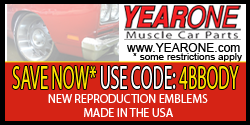j-c-c-62
Well-Known Member
I have to step in here, reducing body roll mechanically is NOT about equalizing wheel load, the benefit is mostly about improving wheel cambers and driver perceptions resulting mostly in better and greater total axle grip.IF it is found that in a tight right turn, the right front tire is carrying minimal load while the left carries 80% or more, (As I suspect) it seems that you could go a few different ways.
I would think that body roll would aggravate the matter so I'd aim to reduce that so the inside tire carries more load.
Best way to equalize tire load if desired on an axle when turning is by slowing cornering speed, change static weight bias L/R, widen track and/or lower COG. Better equalizing tire loading will agreed always increase total axle grip. Body roll however can change wheel cambers reducing total axle grip.
Imagine if one had an infinitely stiff suspension, and a COG above ground, on cornering at high enough speed the inside tire would simply lift off the ground, with zero load with only very slight body roll. As any "suspension" is gently added by design, the inside tire would gently start to share partial loading staying in contact with the ground as suspension became softer, however body roll would be slowly increasing.
Last edited:
















